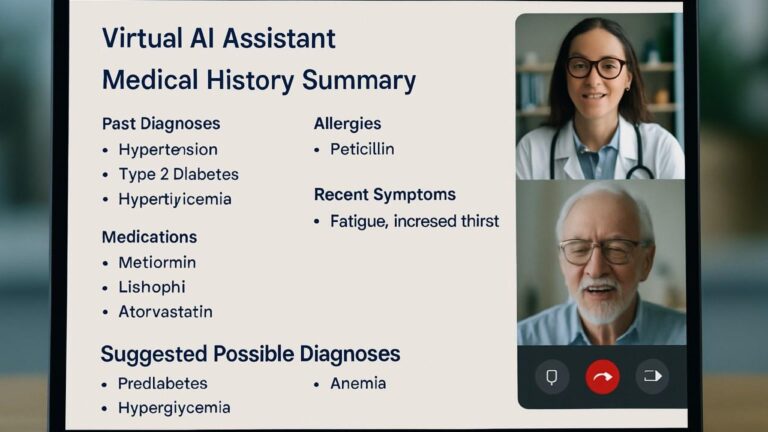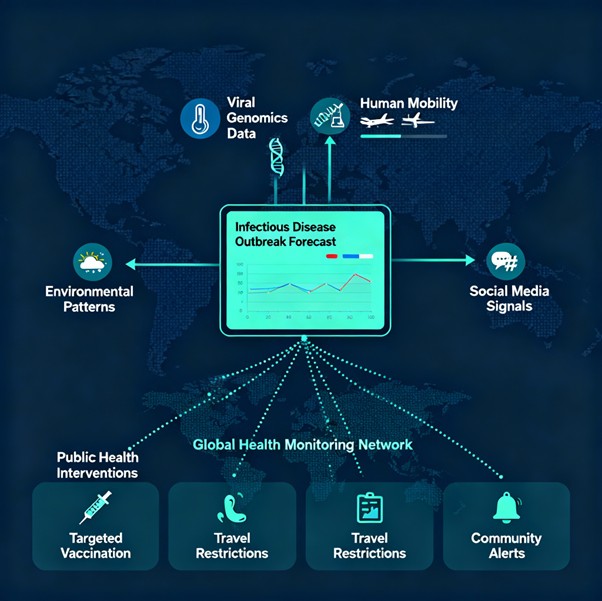What Are “New Approach Methodologies” (NAMs) and How Do AI Models Fit into Preclinical-to-Clinical Transitions?
The pharmaceutical industry stands at a transformative crossroads, where traditional animal testing paradigms are being revolutionized by cutting-edge New Approach Methodologies (NAMs) and artificial intelligence. This shift represents one of the most significant advances in drug development and clinical research in decades, offering unprecedented opportunities for fresh life science graduates and entry-level clinical trials professionals to enter a rapidly evolving field.

Understanding New Approach Methodologies (NAMs)
New Approach Methodologies represent a paradigm shift away from traditional animal testing toward more human-relevant, ethical, and scientifically advanced methods for assessing drug safety and efficacy. NAMs encompass a comprehensive range of innovative techniques including in vitro human tissue models, in silico computational approaches, ex vivo systems, and sophisticated artificial intelligence algorithms.
The foundation of NAMs rests on the principle of creating more predictive and human-relevant data while addressing ethical concerns surrounding animal testing. These methodologies include advanced organ-on-chip technologies, microphysiological systems, high-throughput screening platforms, and computational modeling that can simulate human biological responses with remarkable accuracy.
The Regulatory Revolution: FDA Modernization Act 2.0
The FDA Modernization Act 2.0, signed into law in December 2022, marks a watershed moment for NAMs adoption in drug development. This landmark legislation eliminates the mandatory requirement for animal testing before human clinical trials, explicitly recognizing NAMs as legitimate alternatives for establishing drug safety and efficacy.
The Act redefines “nonclinical tests” to include cell-based assays, microphysiological systems, bioprinted models, and computer-based modeling including artificial intelligence and machine learning approaches. This regulatory shift creates unprecedented career opportunities in clinical trials and opens new pathways for life science graduates to enter the pharmaceutical industry.
FDA’s Strategic Roadmap for NAMs Implementation
In April 2025, the FDA unveiled an ambitious roadmap to phase out routine animal testing, beginning with monoclonal antibodies as a pilot program. This three-year initiative aims to reduce traditional 6-month primate toxicology studies to three months when combined with comprehensive NAM data. The FDA plans to establish an open-access repository of international drug toxicity data, creating new entry-level jobs in data management and bioinformatics for clinical research professionals.
The roadmap outlines specific scientific and technical steps, including mapping critical endpoints, supporting targeted NAM technology development, and creating comprehensive databases for model training. This systematic approach creates diverse career opportunities spanning computational biology, regulatory affairs, and data science within the drug development pipeline.
AI Models: The Engine of Modern Drug Discovery
Artificial intelligence has emerged as the cornerstone of modern drug discovery and development, fundamentally transforming how pharmaceutical companies approach preclinical research. Machine learning algorithms analyze vast biological datasets including genomics, proteomics, and clinical trial data to identify disease targets, predict drug interactions, and optimize therapeutic candidates.
AI Applications Across the Drug Development Continuum
Machine learning applications in drug discovery span the entire development pipeline. In target identification, AI algorithms analyze genetic, proteomic, and clinical data to uncover disease-associated pathways. Virtual screening platforms leverage AI to efficiently evaluate millions of chemical compounds, dramatically reducing the time and cost associated with traditional screening methods.
Deep learning models excel in structure-activity relationship modeling, enabling researchers to optimize drug candidates by predicting molecular properties including potency, selectivity, and pharmacokinetic profiles. Generative AI approaches can propose novel drug-like chemical structures, expanding the chemical space available for therapeutic development.
The Preclinical-to-Clinical Bridge
The transition from preclinical research to clinical trials represents one of the most challenging phases in drug development, with over 90% of investigational drugs failing during clinical development due to poor translation of preclinical data. NAMs integrated with AI models offer unprecedented potential to improve this translational success rate.
Enhanced Predictive Modeling
Physiologically based pharmacokinetic (PBPK) modeling combined with machine learning algorithms creates sophisticated digital twins of human physiology, enabling more accurate prediction of drug behavior in humans. These models incorporate patient-specific data to simulate drug responses across diverse populations, addressing the historical lack of diversity in traditional animal models.
Quantitative systems pharmacology approaches leverage AI to understand complex biological networks and predict how therapeutic interventions will affect human disease pathways. This systems-level understanding enables more informed decision-making in clinical trial design and patient stratification.
Real-World Applications and Success Stories
Leading pharmaceutical companies are already demonstrating the practical value of NAMs and AI integration. Deep Kinetix creates patient-specific digital twins combining organs-on-chips data with machine learning to predict drug responses before clinical trials. CytoReason builds computational models of target cells using AI to analyze disease progression through multi-omic data layers.
The integration of these technologies has shown remarkable success in improving translational accuracy. Case studies demonstrate that AI-generated pharmacokinetic predictions typically fall within two-to-threefold error margins compared to human data, making them viable complements to traditional testing.
Career Opportunities in the NAMs and AI Revolution
The convergence of NAMs and AI creates unprecedented career opportunities for life science graduates and professionals seeking entry-level clinical trials positions. The field demands diverse skill sets spanning computational biology, data science, regulatory affairs, and traditional life sciences expertise.
Emerging Roles and Specializations
Computational biologists and bioinformaticians represent some of the most sought-after positions, requiring expertise in analyzing complex biological datasets using machine learning approaches. Clinical research associates with NAMs expertise are increasingly valuable as pharmaceutical companies transition to alternative methodologies.
Machine learning engineers specializing in drug discovery command premium salaries, with typical career progression from junior roles to senior positions and team leadership. Data scientists focusing on clinical research and pharmaceutical applications represent a rapidly growing segment with strong job security.
Skills Development for Success
Professionals entering this field require a unique blend of technical and domain expertise. Programming proficiency in Python and R, combined with understanding of machine learning frameworks like TensorFlow and PyTorch, forms the technical foundation. Deep knowledge of pharmacology, genomics, and clinical research processes provides essential domain context.
Statistical analysis skills and familiarity with bioinformatics tools enable professionals to work effectively with complex biological datasets. Understanding of regulatory requirements and Good Clinical Practice (GCP) guidelines remains crucial for career advancement in clinical trials.
Global Market Dynamics and Industry Growth
The global clinical research market continues expanding rapidly, driven by increasing pharmaceutical R&D investments and the adoption of innovative technologies. Major contract research organizations including IQVIA, PAREXEL, Syneos Health, and ICON are actively recruiting fresh graduates and entry-level professionals with relevant skills.
Geographic Opportunities
India has emerged as a significant hub for clinical research and biotechnology careers, with major pharmaceutical companies and CROs establishing substantial operations. The country offers attractive salary packages for clinical research associates, ranging from ₹3-8 LPA for entry-level positions, with rapid career progression opportunities.
International markets, particularly the United States and Europe, offer even higher compensation packages for professionals with specialized NAMs and AI expertise. Salaries for machine learning engineers in drug discovery range from $80,000-150,000 annually, with senior positions commanding significantly higher compensation.
Challenges and Future Perspectives
Despite the promising outlook, several challenges must be addressed for widespread NAMs adoption. Regulatory acceptance remains a key hurdle, requiring extensive validation studies and stakeholder engagement to build confidence in alternative methodologies. The lack of standardized protocols and quality assurance frameworks poses additional implementation challenges.
Data quality and availability represent another significant barrier. Many NAM approaches require extensive, high-quality datasets for model training and validation. The pharmaceutical industry must invest in data standardization and sharing initiatives to maximize the potential of AI-driven approaches.
Educational and Training Needs
The rapid evolution of NAMs and AI creates substantial training opportunities for clinical research professionals. Universities and training institutes are developing specialized programs combining life sciences knowledge with computational skills. Post-graduate diplomas in clinical research (PGDCR) increasingly incorporate NAMs and AI modules to prepare graduates for modern pharmaceutical careers.
Continuous professional development becomes essential as technologies evolve rapidly. Professionals must stay updated with emerging machine learning techniques, regulatory requirements, and industry best practices to remain competitive in this dynamic field.
The Road Ahead: Integration and Innovation
The future of drug development lies in the seamless integration of NAMs and artificial intelligence across the entire pharmaceutical pipeline. This integration promises to reduce development timelines, improve success rates, and ultimately deliver better treatments to patients more efficiently and ethically.
Personalized medicine approaches will be significantly enhanced through AI-powered NAMs, enabling treatment optimization based on individual patient characteristics. The combination of organ-on-chip technologies with machine learning algorithms will create unprecedented insights into drug responses across diverse patient populations.
As regulatory frameworks continue evolving and industry adoption accelerates, the demand for skilled professionals will only increase. Fresh life science graduates entering this field today will witness and contribute to one of the most transformative periods in pharmaceutical history, where science fiction becomes scientific reality in the pursuit of better human health.
The convergence of NAMs and AI represents more than technological advancement; it embodies a fundamental shift toward more ethical, efficient, and effective drug development. For aspiring professionals and established scientists alike, this revolution offers the opportunity to be part of a movement that will reshape medicine for generations to come, while building rewarding careers in one of the most dynamic and impactful industries of our time.






